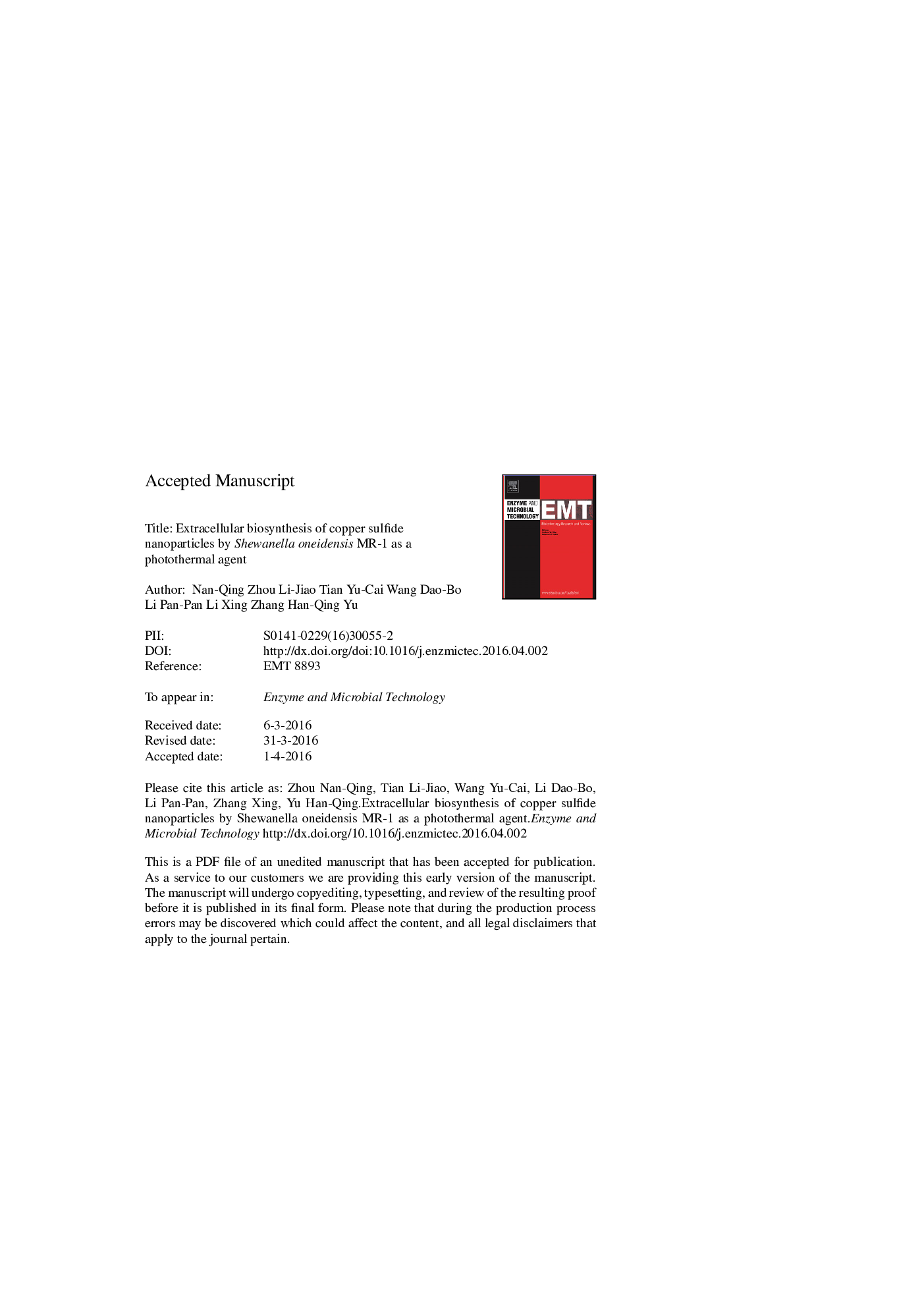| Article ID | Journal | Published Year | Pages | File Type |
|---|---|---|---|---|
| 4752818 | Enzyme and Microbial Technology | 2016 | 28 Pages |
Abstract
Photothermal therapy (PTT) is a minimally invasive and effective cancer treatment method and has a great potential for innovating the conventional chemotherapy approaches. Copper sulfide (CuS) exhibits photostability, low cost, and high absorption in near infrared region, and is recognized as an ideal candidate for PTT. However, CuS, as a photothermal agent, is usually synthesized with traditional chemical approaches, which require high temperature, additional stabilization and hydrophilic modification. Herein, we report, for the first time, the preparation of CuS nanoparticles as a photothermal agent by a dissimilatory metal reducing bacterium Shewanella. oneidensis MR-1. The prepared nanoparticles are homogenously shaped, hydrophilic, small-sized (â¼5Â nm) and highly stable. Furthermore, the biosynthesized CuS nanoparticles display a high photothermal conversion efficiency of 27.2% because of their strong absorption at 1100Â nm. The CuS nanoparticles could be effectively used as a PTT agent under the irradiation of 1064Â nm. This work provides a simple, eco-friendly and cost-effective approach for fabricating PTT agents.
Related Topics
Physical Sciences and Engineering
Chemical Engineering
Bioengineering
Authors
Nan-Qing Zhou, Li-Jiao Tian, Yu-Cai Wang, Dao-Bo Li, Pan-Pan Li, Xing Zhang, Han-Qing Yu,
